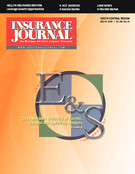Researchers hope the project could revolutionize mobility and challenge long-held assumptions about perceived limitations.
Do you ever feel like you’re driving blind? Have you ever passed through a stop sign and swore you never saw it? Or nearly sideswiped a car while changing lanes because, gosh darn, the other car wasn’t there when you looked before? Incidents like these are not really indications of driving blind – although they may feel like it – they’re more like instances of not paying attention.
While I like to think I’m an observant driver who brakes for stop signs and is hyper aware of other cars when changing lanes, I have to admit there are times when I’ve driven to a destination and realized I had been on auto pilot going down the road. My mind was somewhere else.
But really, truly blind driving? It seems like a sci-fi fantasy.
Yet researchers National Federation of the Blind (NFB) and Virginia Polytechnic Institute and State University, College of Engineering (Virginia Tech) are working to turn fantasy into reality.
The NFB and Virginia Tech are partnering to demonstrate the first street vehicle equipped with technology that would allow a blind person to drive independently. The vehicle is scheduled to be demonstrated to the public as part of the pre-race activities at the 2011 Rolex 24 At Daytona on Jan. 29, 2011. A Ford Escape, equipped with nonvisual interface technology, will be driven by a blind individual who will navigate part of the famed Daytona International Speedway course.
Dr. Dennis Hong, director of the Robotics and Mechanisms Laboratory at Virginia Tech, said three years ago his group accepted the “NFB Blind Driver Challenge to develop a vehicle that can be driven by a blind person. The challenge was not the development of an autonomous vehicle that could drive a blind person around, but rather the creation of nonvisual interfaces that would allow a blind person to actually make driving decisions.”
The nonvisual interfaces use sensors to let a blind driver maneuver a car based on information transmitted to him about his surroundings: whether another car or object is nearby, in front of him or in a neighboring lane.
While some may think of the idea of a blind person driving independently as dangerous as well as impossible, researchers hope the project could revolutionize mobility and challenge long-held assumptions about perceived limitations.
“This demonstration will break down the wall of stereotypes and misconceptions that prevent our full integration into society by showing the public that the blind have the same capacities as everyone else,” said Dr. Marc Maurer, president of the National Federation of the Blind.
One could see the possibilities such technologies may hold for improving the driving records of the fully sighted as well. After all, there are often drivers on the road who may not be driving blind, but sometimes act like it.
Was this article valuable?
Here are more articles you may enjoy.


 US P/C Insurers Post Best Q1 Underwriting Result In 17 Years
US P/C Insurers Post Best Q1 Underwriting Result In 17 Years  Farmers Adjusters Cry Foul Over Workloads, Claims Handling in Letter to Regulators
Farmers Adjusters Cry Foul Over Workloads, Claims Handling in Letter to Regulators  German Insurtech Wefox to Replace CEO After Board Rejects Mubadala Sales Plan
German Insurtech Wefox to Replace CEO After Board Rejects Mubadala Sales Plan  GEICO Tops Progressive With Higher J.D. Power Scores
GEICO Tops Progressive With Higher J.D. Power Scores 


